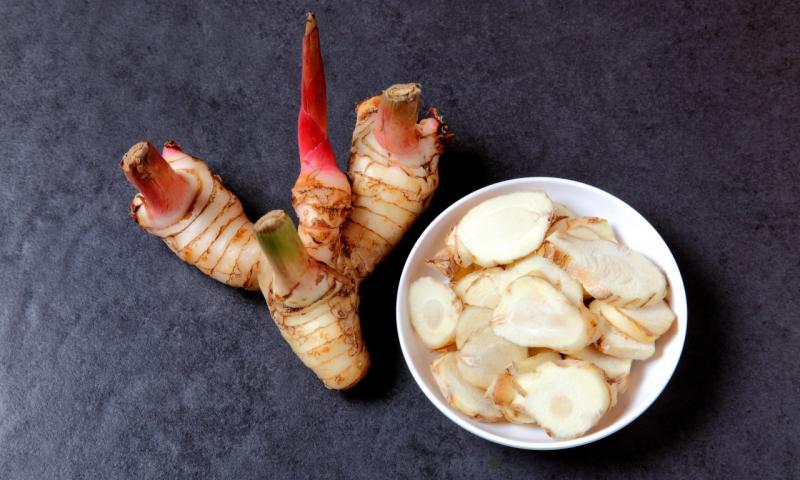 />
/>
Among the species of the genus Alpinia of the ginger family (Zingiberaceae), there is a very useful and healing plant with pretty white flowers in pink stripes named galangal.
The galangal in its natural form has the following external data: this is a perennial herb. The height reaches up to 150 centimeters. The stems of the galangal are flower-bearing and deciduous. One plant counts from 25-40 stems. The leaves are long and lancet-shaped, are located sequentially. The color of the leaves is dark green, reaching from 18-30 cm in length and of up to two centimeters in width.
Galangal blossoms from March to June. Its flowers are rather short tubes with oblong blades. Their petals are white in pink strips. They are collected in spike-shaped inflorescences at the very top of the plant. Spikelets can be up to 10 cm. Fruits resemble red boxes with small seeds inside.
The roots are called "rhizome". They are thick, creeping with a huge number of branches. The thickness is 1-2 centimeters. It has dark cross-cut rings, and the color is from pale yellow to reddish. The root is mainly used for medicinal purposes and cooking.
Native to grassland areas of southern China, and Southeast Asia in general, galangal is now cultivated as a spice and as a medicine throughout much of tropical Asia. It is propagated by dividing and replanting the rhizomes in spring, and it requires well-drained soil and a shady position. The rhizomes are harvested from 4- to 6-year-old plants at the end of the growing season and may be used fresh or dried.
Although Alpinia Galanga is from China, more precisely from the Chinese island of Hainan. It now has spread almost all over the world and can be found in:
- Thailand;
- the island of Java (in Indonesia);
- Mediterranean countries;
- the countries of Central Asia, Transcaucasia, the Armenian and Iranian highlands;
- the Caucasus region;
- the countries of southern Africa;
- the countries of North and South America.
It was introduced into Europe by Arabian physicians over 1,000 years ago. The German mystic Hildegard of Bingen regarded it literally as the “spice of life,” given by God to ward off ill-health.
Alpinia Galanga is a very fragrant plant. The statement that it can be replaced by ginger is incorrect. Ginger smells like a burning citrus, and the Alpinia is more tender and disposable. Galangal is used in Asia as a warming and nourishing spice for the digestive system.
The taste of flowers, buds and stems is very spicy. The roots are bitter and sharp. The dried galangal’s taste is sweeter, spicier, reminiscent of cinnamon.
Galangal is an important spice in Thai cooking and is reportedly fed to Arabian horses to “fire them up” in parts of Asia.
